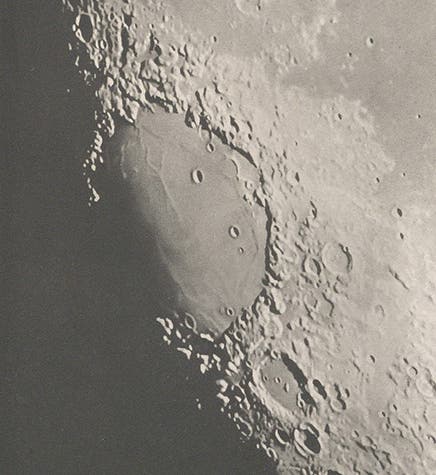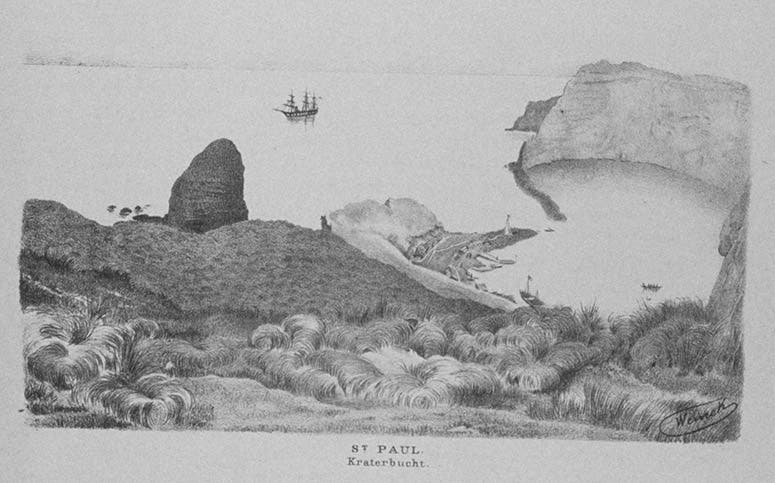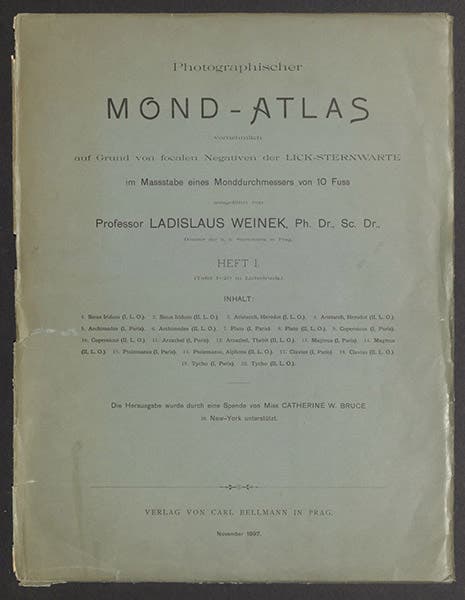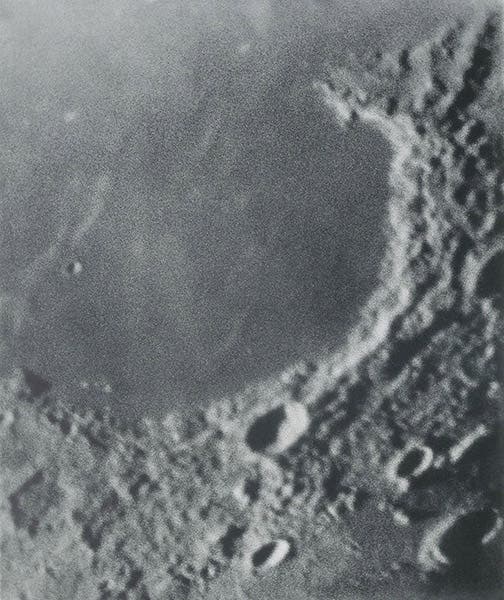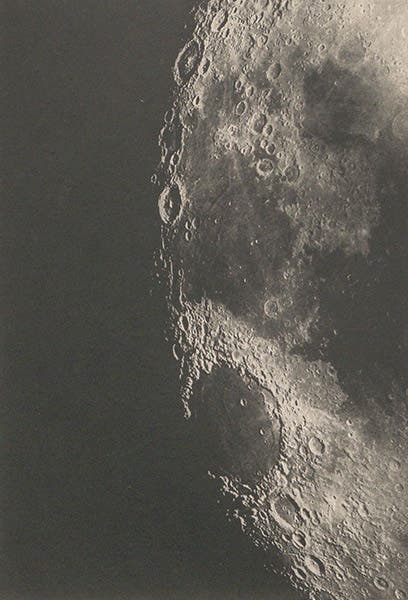Scientist of the Day - Ladislaus Weinek
Ladislaus Weinek, an Austro-Hungarian astronomer, was born Feb. 13, 1848, in Buda. He studied astronomy in Vienna, and before becoming director of the Clementinum Observatory in Prague, he went on an expedition to the Kerguelen Islands, near Antarctica, to observe the 1874 transit of Venus. While visiting St. Paul Island, in the Indian Ocean between Australia and Africa, Weinek made a drawing of the crater bay that dominates the island, revealing the artistic skills that would be so useful in his astronomical work, as we shall see (third image).
Weinek was interested in selenography, the study and mapping of the lunar surface. He belived that lunar photography could produce a better lunar atlas than the many fine atlases that were based on drawings made at the telescope, and at the time (early 1890s) there were no photographic lunar atlases. The Clementinum Observatory did not have a suitable telescope for taking high-resolution photographic images of the Moon, so Weinek turned to two observatories that did: the Paris Observatory, and the new Lick Observatory on Mount Hamilton in central California. He must have visited the Lick Observatory, for he was given access to all their lunar negatives, and he must have visited Paris as well, for beginning in 1897, he began issuing, in fascicles, a 200-plate lunar atlas, called Photographischer Mond-Atlas, which came out in 10 installments between 1897 and 1900. It was based on negatives taken at the Paris and Lick Observatories.
Weinek's Atlas is not organized like the lunar atlases of Wilhelm Beer and Johann Mädler, or Julius Schmitt, which attempted to methodically map the Moon, as one would map the Earth. Instead, Weinek focused on individual craters, which he teased out of the original negatives by enlarging them up to 20 times. They were then printed by collotype, an expensive process for printing photographs that gave exceptional results. The high cost, however, eventually derailed the project, which was intended to have twice as many plates. Still, it is a glorious lunar atlas, and quite large – our ten fascicles, each with their individual paper covers, fill a large study chipboard box on the folio shelves of our vault.
We reproduce here, from Weinek’s Mond-Atlas, the complete plate of the crater Clavius (fourth image), and a slightly cropped plate of the Sinus Iridium, the bay at the top of the Ocean of Storms with a promontory that resembles a human face (sixth image).
As fine as Weinek's lunar snapshots are, in his Mond-Atlas, I am partial to a publication that appeared three years earlier, which fills much of volume 3 of the Publications of the Lick Observatory for 1894. This also contains plates of the Moon, although far fewer, just a dozen or so. For this occasion, Weinek started with the Lick negatives and then, using a microscope to enlarge them, made paintings from the negatives. We show my very favorite as our introductory image, a drawing of the Mare Crisium by Weinek, printed as a heliogravure. It is really a beautiful painting, softer than a photographic print, yet seemingly with photographic accuracy. For each of his drawings, Weinek also included a photograph of the same area, also printed as a heliogravure, so that you can compare his drawings with a true print. We show the photograph from his article that includes Mare Crisium (seventh image). If you are like me, you will opt for the drawing (first image).
The other heliogravure I really like in the 1894 publication is not a drawing, but a real photograph of the lunar Apennines. Since in his later Atlas, Weinek did not include any panoramic views like this, I thought I would incorporate it here, as our last image.
We included both Weinek’s 1894 monograph and his 1897-1900 Mond-Atlas in our exhibition, The Face of the Moon: Galileo to Apollo, which you may access online. Here is the 1894 work, and the 1897 Atlas.
William B. Ashworth, Jr., Consultant for the History of Science, Linda Hall Library and Associate Professor emeritus, Department of History, University of Missouri-Kansas City. Comments or corrections are welcome; please direct to ashworthw@umkc.edu.

